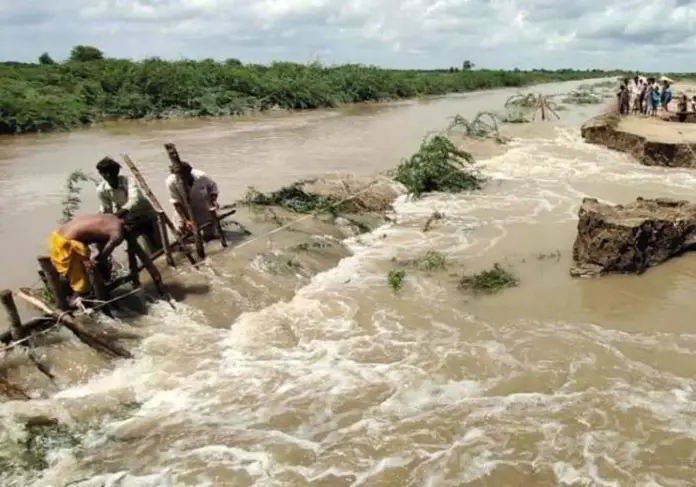Torrential monsoon rains across the country on Wednesday continued claiming lives and inflicting losses to property, as the total death count in various incidents reached 1,302, with 36 more deaths in the past 24 hours, while 3,554 individuals got injured since the onset of the rainy season.
The National Disaster Management Authority (NDMA) issued a 24-hour situation report that showed the overall losses to life, property, and infrastructure as a result of heavy rains lashing various parts of the country.
Swaths of the country are now under water, after what United Nation officials described as a “monsoon on steroids” brought the heaviest rainfall in living memory and flooding that has affected 33 million since mid-June.
Heavy rains and flash floods caused deaths of four women and a man in Kachhi district of Balochistan.
In Khyber Pakhtunkhwa, nine people perished due to roof collapse incidents and flash floods in various districts.
Data compiled by the NDMA mentioned that the segregated data of death of 19 persons was confirmed by the PDMA Punjab. In Sindh, three men perished in Dadu.
The hill torrents and floodwaters from Balochistan – after leaving a trail of widespread destruction and devastation behind – are now moving towards Dadu. According to reports, it was decided to cut the Main Nara Valley (MNV) Drain at Dur Mohammad Abro village, for which machinery was deployed to different points. Several major settlements are feared to be submerged in floodwater along with Dadu town. The people of the area were seen resisting the possible cuts to the drain, and formed a human shield in front of the machinery to prevent the cuts from five points.
According to reports from Mithi, two minor girls, identified as Anina, 11, and Sadori, 12, drowned near Khanan Junejo village of Kaloi town after they slipped into gushing floodwater. Their bodies were retrieved by villagers after hectic efforts. Meanwhile, CNN reported that striking new satellite images reveal the extent of flooding, showing how an overflowing Indus River has turned part of Sindh into a 100 kilometer-wide inland lake.
The new images, taken on August 28 from NASA’s MODIS satellite sensor, show how a combination of heavy rain and an overflowing Indus River have inundated much of the province.







